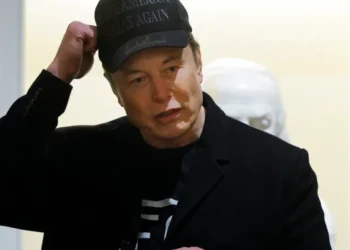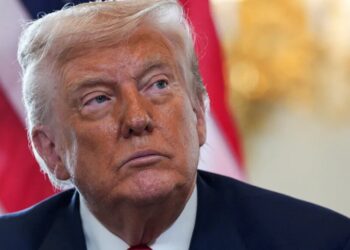Heroic Texas father rescues abducted daughter by tracking her cell phone after Christmas Day kidnapping
A quick-thinking Texas father heroically rescued his kidnapped teen daughter by tracking her cell phone shortly after she was snatched...
ICE Goons Melt Down Over Former Detainee Making TikToks
The Department of Homeland Security is incensed that former detainee Kilmar Abrego Garcia is no longer in their custody and...
Elon Musk’s ‘unselfaware’ comment spurs fact check from his own AI — and a Dem leader
The richest man in the world saw his comments backfire on Saturday after he criticized a decision made by New...
Tipsy thief steals 2 mandolins from NJ music store, returns them with note saying ‘I been drunk’
He didn’t want to face the music. A tipsy thief stole two mandolins from a New Jersey music store —...
Amy Poehler’s Boston roots came out in wild plane fight in front of baby
Amy Poehler hilariously recalled her Boston roots emerging during an argument on a plane. “I remember being on a plane...
Indiana pushes to remain sharp after long layoff before Rose Bowl showdown with Alabama
1 p]:text-cms-story-body-color-text clearfix”> No. 1 Indiana booked its ticket to the College Football Playoff quarterfinals on Dec. 6 after defeating...
Trump Goon Offers Excuse for ICE Barbie’s Wild Cosplays
The public confusion surrounding Kristi Noem’s love of law enforcement cosplay finally appears to have reached the Department of Homeland...
Lakers ‘recalibrate’ after Austin Reaves injury, three-game losing streak
After the Lakers’ third straight loss Thursday, JJ Redick promised things would get “uncomfortable.” The second-year coach, frustrated after the...
‘This is serious’: Trump nemesis warns Dems ‘won’t have a chance’ if they lose this race
A Democratic governor who serves as a thorn in the side of Donald Trump on Saturday warned that Dems “won’s...
‘Unlucky’ illegal immigrant runs red light, crashes straight into ICE vehicle: feds
An “unlucky” illegal immigrant allegedly crashed into an Immigration and Customs Enforcement vehicle and was subsequently nabbed, the agency said....














